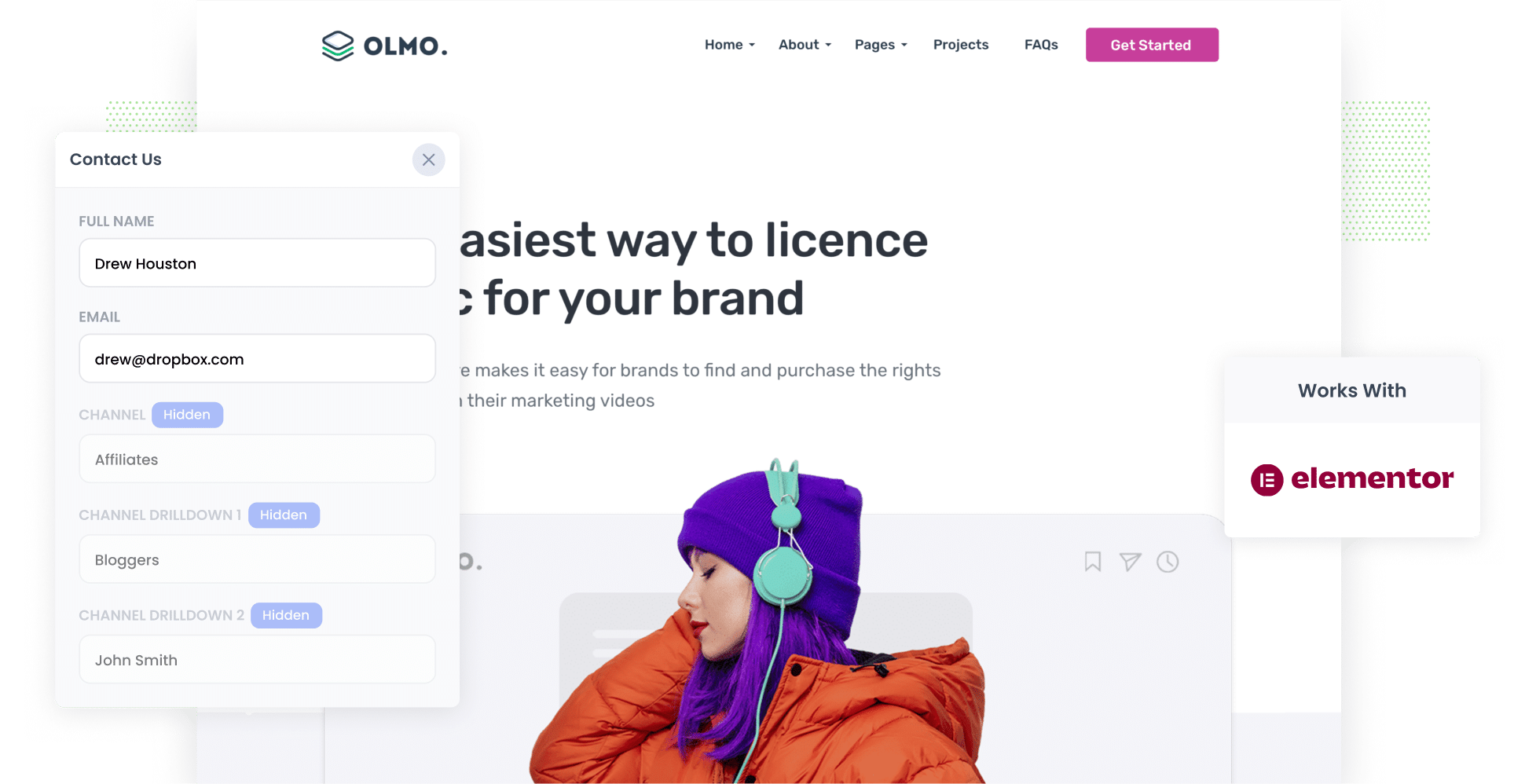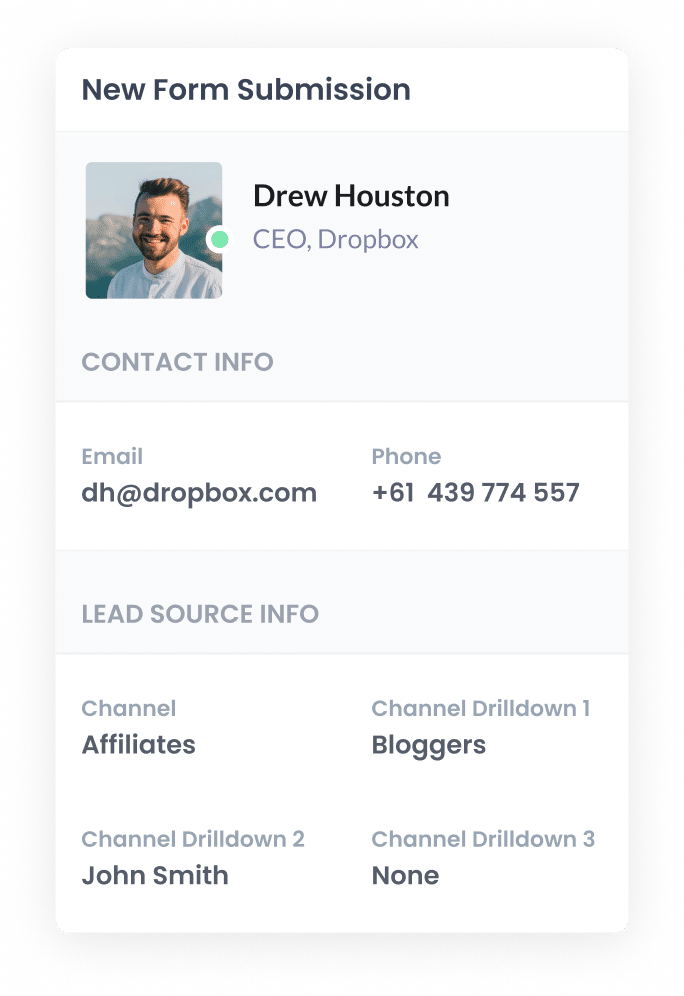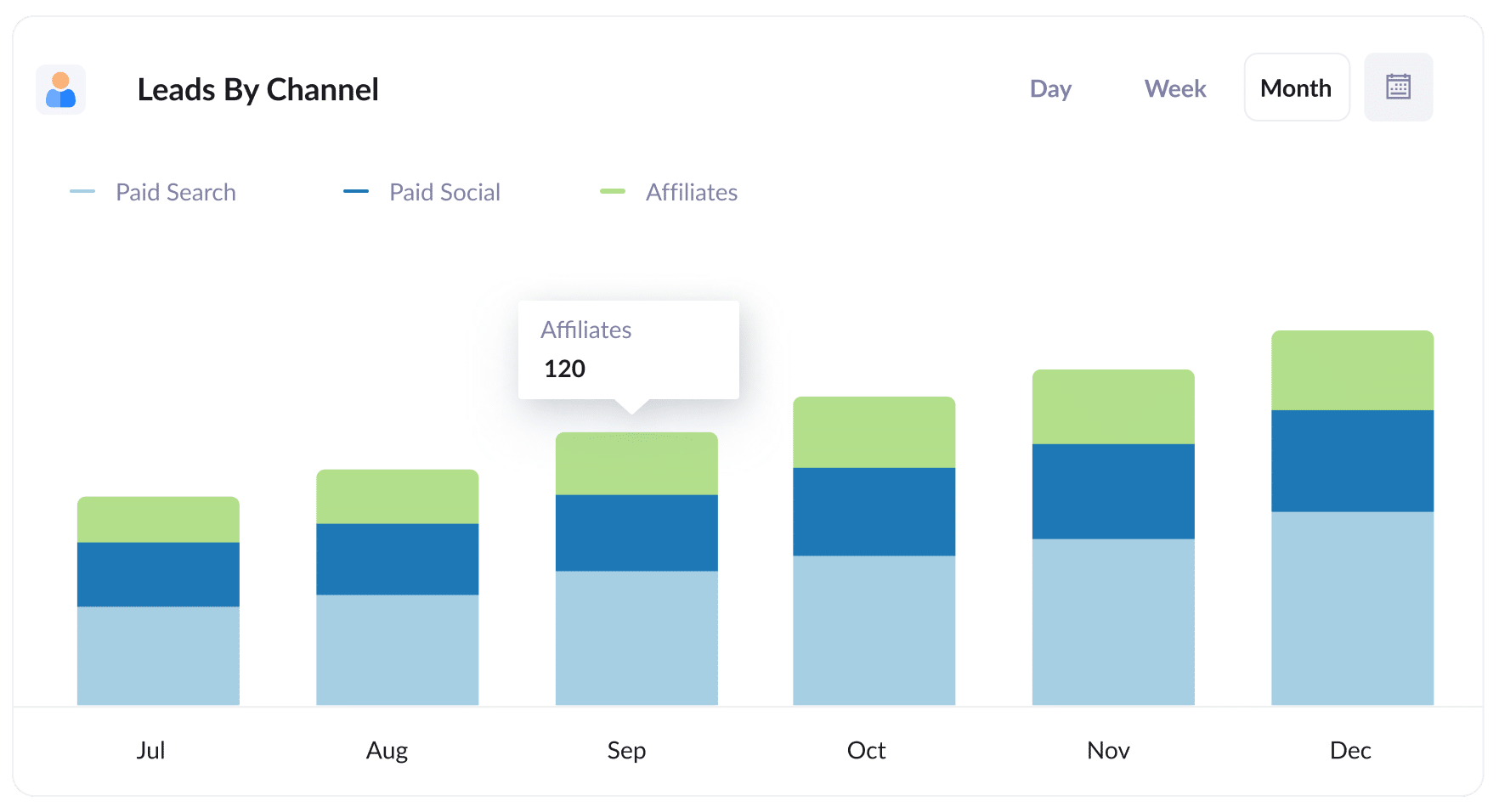How to track leads from Affiliates in Elementor forms
Learn how to capture affiliate data with each submission of your Elementor forms, so you know which affiliates are generating the most leads.

Are you struggling to track how many leads & customers you get from your affiliate program?
It's a common problem. Most affiliate management tools can track how many clicks each of your links get, but rarely can they track how many leads you got, how many converted into customers, how much revenue was generated, etc.
Fortunately though, there is a solution
In this article, we’ll show you how to use a tool called Attributer to capture affiliate data with each submission of your Elementor forms. We’ll also show you a series of example reports you can run that’ll help you understand how your affiliate program is performing.
4 simple steps to capture affiliate data in Elementor
By using Attributer with Elementor forms, you can track how many leads and customers you get from your affiliate program. Here's how:
1. Add UTM parameters to your affiliate links

Your first step is to add UTM parameters to the links you give to your affiliates.
If you want to send them to send people to attributer.io/integrations/elementor, the link you give might your affiliates will look something like this:
attributer.io/integrations/elementor?utm_medium=affiliates&utm_source=bloggers&utm_campaign=john-smith
You should put whatever information into the UTMs you want to gather about your affiliates. However, we recommended something like this:
- UTM_Medium = Affiliates
- UTM_Source= Bloggers (or the type of affiliate this is, such as bloggers, podcasters, youtubers, etc.)
- UTM_Campaign= John-Smith (or the name of the specific affiliate)
You can use programs like Trackdesk or Rewardful to automatically add UTM parameters to the links you send to your affiliates, and you can use our free UTM builder to create the UTM-tagged links (it even has a template for affiliates).
2. Add hidden fields to your forms

The second step is to add a series of hidden fields to the Elementor forms on your website.
The hidden fields we recommend look something like this:
- Channel
- Channel Drilldown 1
- Channel Drilldown 2
- Channel Drilldown 3
- Landing Page
- Landing Page Group
Elementor forms makes this simple to do; our step-by-step instructions are available here.
3. Attributer writes the affiliate data into the hidden fields

When someone visits your website through one of your affiliate links with UTM parameters, Attributer gets to work. It collects and saves those details in the visitor’s browser. So, if they browse around your site or leave and return later, all those UTM parameters from their first visit will still be there.
Then when a user fills out a form on your website, Attributer automatically adds the affiliate information from those UTM parameters to the form's hidden fields.
4. Affiliate data is captured by Elementor forms

When someone submits a form on your website, Elementor forms will capture the affiliate data that Attributer has added into the hidden fields, alongside the information your visitors share in the form, like their name and email address.
What you can do with the data
Now that the Affiliate data is being captured by Elementor forms, what can you do with it? Here are some examples for you to put it to use:
- Send it to your CRM: You can send the affiliate data into your CRM system, such as Salesforce, Hubspot, or Pipedrive. This will allow you to generate reports that show the number of leads generated from your affiliate program, the conversion rate into customers, the amount of revenue generated, and more. This should give you a better picture of your affiliate program's performance.
- Export it to a spreadsheet: With the help ofan Elementor add-on or a tool like Zapier, you can send your data to a spreadsheet. Once your data is in the spreadsheet, you can generate basic charts and graphs with it, or you can connect analytics tools like Looker Studio or Microsoft Power BI to create more advanced reports.
- Add it to your email notifications: If you don’t use a CRM, you can include it in the email notifications that Elementor forms sends so that you can easily see where each lead is coming from.
Why use Attributer?
Here are some reasons why Attributer is the best way to capture affiliate data in Elementor forms:
- Captures other attribution data—In addition to capturing data on leads from your affiliate program, Attributer also provides data on leads from other channels, such as Paid Search, Paid Social, Organic Social, and Organic Search. This gives you a good overview of where your leads and customers come from, helping you understand the effectiveness of each channel.
- Remembers the data - Attributer retains UTM parameters in the visitor's browser, ensuring the affiliate data is remembered even if users explore your site or leave and come back before filling out a form.
- Captures landing page data - Attributer also captures the landing page URLs (e.g., https://attributer.io/blog/best-elementor-addons) and landing page group (e.g. /blog). This feature enables you to track how many leads and customers your website content (like your blog) generates.
3 example reports you can run when you capture affiliate data in Elementor
By capturing affiliate data with each submission of your Elementor forms, and then sending it to a CRM or reporting tool, you can generate various reports that show how your affiliate program is performing.
I totally get how essential it is to keep track of this data. After running many reports over the years, I've found a few that I think you’ll find especially useful.
I’ve listed three examples that could really help you out.
1. Leads by Channel

Attributer is here to help make your life a little easier. We help you track where all your leads are coming from—not just those from your affiliate program. This means you can easily generate reports (like the one above) to see how many leads you get from different channels.
With this information, you’ll better understand how your affiliate program compares to other channels like Paid Search or Paid Social. It’s a simple way to ensure you’re focusing your resources in the right areas.
2. Customers by Affiliate Type

This report gives you an overview of how many new customers that your affiliate program has attracted.
It breaks it down by the type of affiliate that brought the customer in, like bloggers, YouTubers, podcasters, and social media influencers, so you can find which affiliates are making the biggest impact.
3. Revenue by Affiliate

This table shows the new customers and revenue your affiliate program has brought in, organised by each affiliate’s contributions. It’s a great tool for checking how your affiliates are doing and can help you make informed choices about how to grow the program.
How Attributer helped William Russell scale their affiliate program
William Russell is a UK-based insurance company specialising in Health and Life Insurance for expats. It has a great affiliate network that brings in lots of leads, but it faced a challenge: its affiliate management program wasn't connected to its CRM. This made it tough to see how many affiliate leads actually became customers and how much revenue was generated.
That’s where Attributer came in.
They began adding UTM parameters to every link shared with the affiliates.
Then when someone clicked the link and came to their website, Attributer would capture the UTM parameters and store them in the visitor's browser.
FInally, when they completed a form on the William Russel website, Attributer wrote the affiliate data (taken from the UTM parameters) into hidden fields on the form where it was captured and sent to their CRM.
They were then able to run reports in their CRM that showed the number of customers who came through their affiliate program, the revenue generated, the conversion rates, and even the average deal size.
With these insights, they could compare their affiliate program to other marketing channels, such as Google Ads and Facebook Ads. They discovered that their affiliate program was actually their most profitable channel.
"By using Attributer, we're able to track the amount of customers & revenue that come from our affiliate program, as opposed to just website visitors and leads. This has shown us that it's our most profitable channel and has helped us scale it"

William Cooper - Marketing Director @ William Russell Insurance

Wrap Up
If you've been looking for a way to capture affiliate data with each submission of your Elementor forms, then Attributer could be the answer.
You can easily send the data that Attributer provides into your CRM and create reports that help answer questions like:
- How many new customers are coming from bloggers vs podcasters?
- How much revenue is being generated by each affiliate?
- What is the lead-to-customer conversion rate of leads that come from our affiliate program?
- What is the average deal size of customers from our affiliate program compared to customers from our Google or Facebook Ads?
Best of all, it’s free to get started with Attributer and usually takes less than 10 minutes to set up. So start your 14-day free trial today!
Get Started For Free
Start your 14-day free trial of Attributer today!

About the Author
Aaron Beashel is the founder of Attributer and has over 15 years of experience in marketing & analytics. He is a recognized expert in the subject and has written articles for leading websites such as Hubspot, Zapier, Search Engine Journal, Buffer, Unbounce & more. Learn more about Aaron here.
